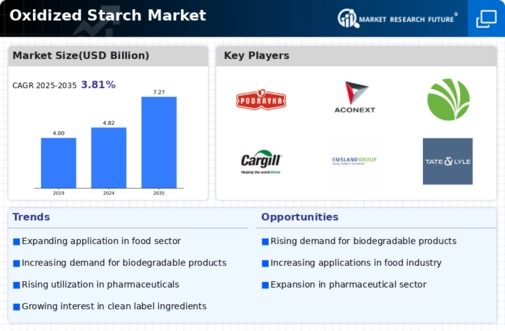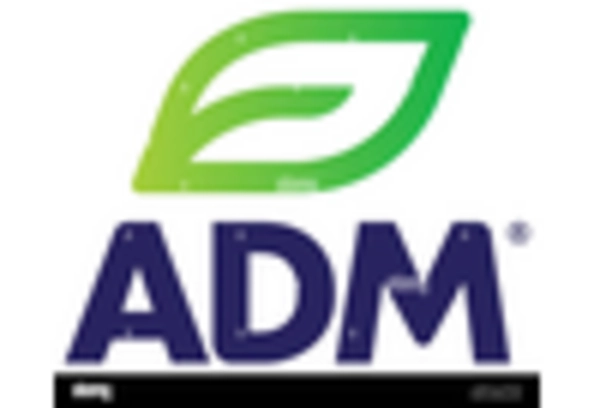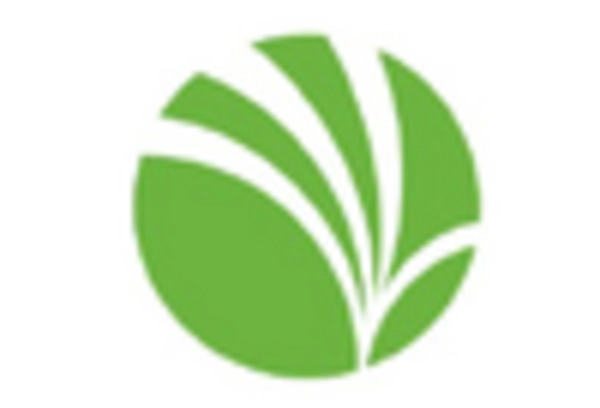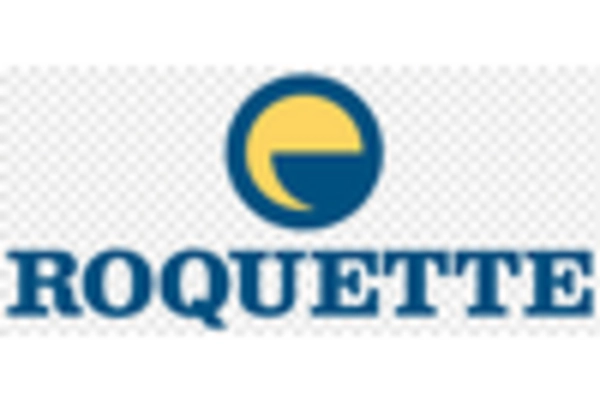Expansion of the Textile Industry
The Oxidized Starch Market is poised to benefit from the expansion of the textile sector. Oxidized starch is utilized in textile processing as a sizing agent, providing strength and durability to fabrics. The textile industry is anticipated to grow at a compound annual growth rate of around 4% over the next few years, which may lead to increased consumption of oxidized starch. As manufacturers strive to enhance the quality of textiles, the demand for effective sizing agents like oxidized starch is likely to rise. This trend suggests a favorable outlook for the oxidized starch market, particularly as the textile industry continues to innovate and adapt to changing consumer preferences.
Rising Applications in Food Industry
The Oxidized Starch Market is experiencing a notable increase in demand due to its diverse applications in the food sector. Oxidized starch is utilized as a thickening agent, stabilizer, and emulsifier in various food products, including sauces, dressings, and baked goods. The food industry is projected to account for a substantial share of the market, driven by consumer preferences for texture and consistency in food products. As the trend towards convenience foods continues, the need for effective food additives like oxidized starch is likely to grow. Furthermore, the increasing focus on clean-label products is pushing manufacturers to seek natural and safe ingredients, thereby enhancing the appeal of oxidized starch in food formulations.
Growth in Pharmaceutical Applications
The Oxidized Starch Market is witnessing a surge in its utilization within the pharmaceutical sector. Oxidized starch serves as a disintegrant and binder in tablet formulations, contributing to the efficiency of drug delivery systems. The pharmaceutical industry is expected to expand, with a projected growth rate of approximately 5% annually, which may further bolster the demand for oxidized starch. As pharmaceutical companies increasingly prioritize the development of innovative drug formulations, the role of oxidized starch as a reliable excipient becomes more pronounced. This trend indicates a promising future for the oxidized starch market, particularly as the healthcare sector continues to evolve and expand.
Rising Demand for Biodegradable Products
The Oxidized Starch Market is experiencing a shift towards biodegradable products, driven by increasing environmental awareness among consumers. Oxidized starch is recognized for its biodegradable properties, making it a suitable alternative in various applications, including packaging and disposable items. The market for biodegradable materials is projected to grow significantly, with estimates suggesting a value exceeding 300 billion by 2025. This trend indicates a potential increase in the demand for oxidized starch as manufacturers seek sustainable solutions to meet regulatory requirements and consumer expectations. The emphasis on eco-friendly products is likely to enhance the market position of oxidized starch in the coming years.
Increasing Demand in Personal Care Products
The Oxidized Starch Market is also benefiting from the rising demand for personal care products. Oxidized starch is employed in cosmetics and personal care formulations as a thickening agent and absorbent, enhancing product texture and performance. The personal care industry is projected to grow significantly, with an estimated market value reaching over 500 billion by 2026. This growth is likely to drive the demand for oxidized starch, as manufacturers seek to improve product formulations. Additionally, the trend towards natural and organic ingredients in personal care products aligns well with the properties of oxidized starch, making it an attractive option for formulators aiming to meet consumer expectations.

















Leave a Comment